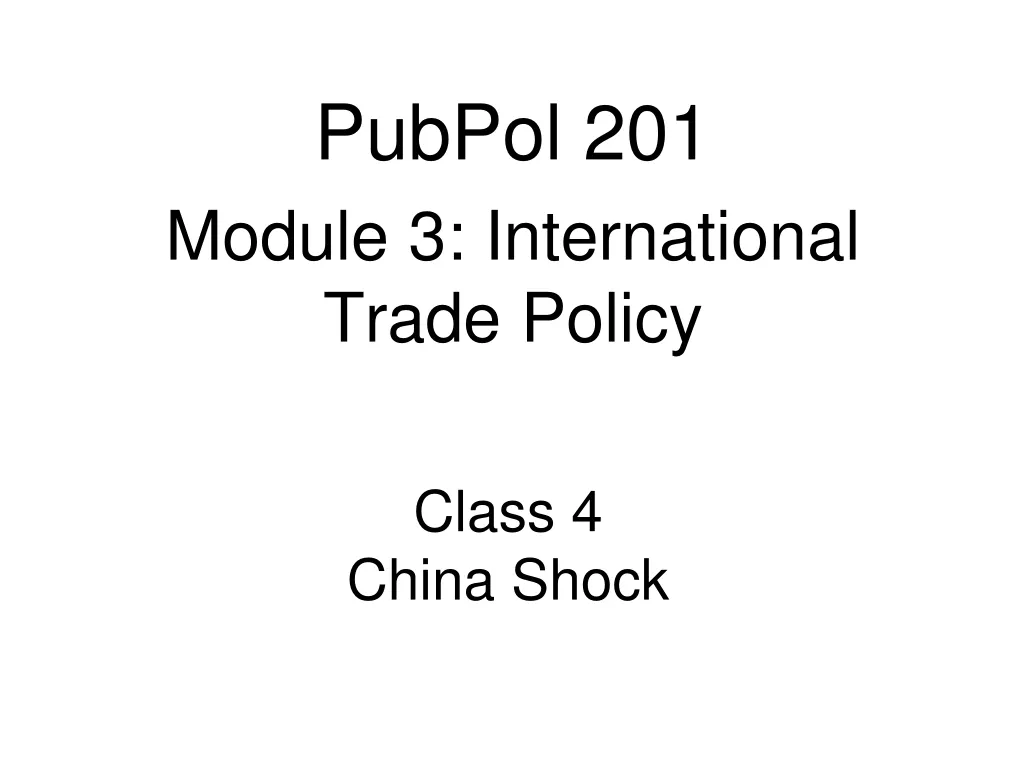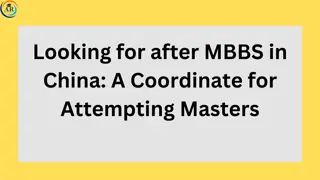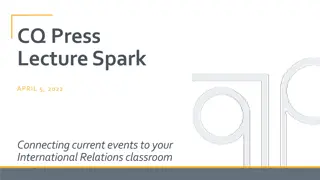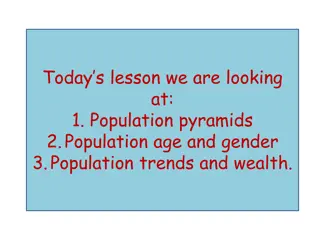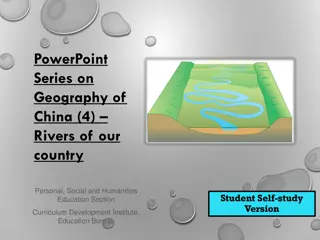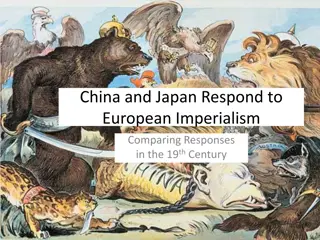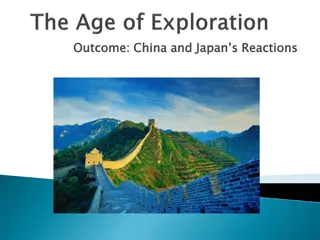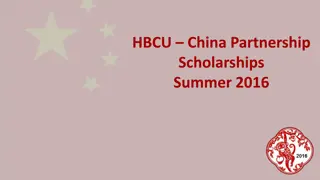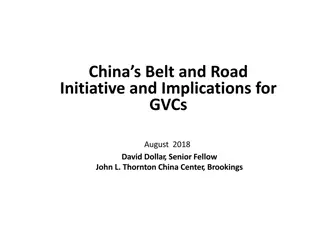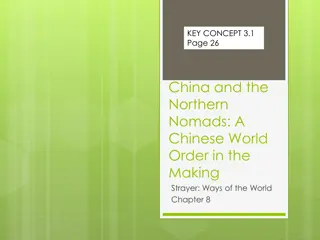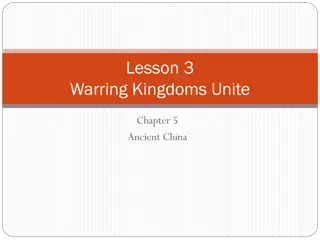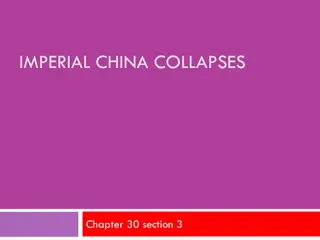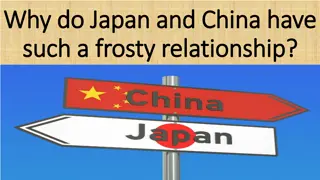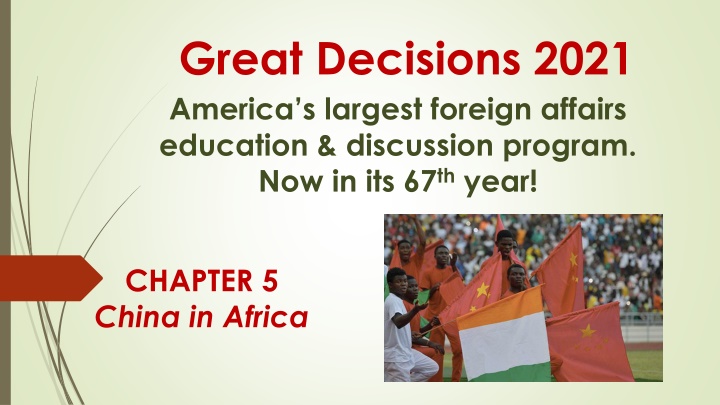
China's Growing Influence in Africa: A Closer Look
China's historical involvement in Africa, from the TAZARA Railway project to the Forum on China-Africa Cooperation (FOCAC) and beyond. Learn about China's contributions to infrastructure, peacekeeping efforts, and education initiatives on the continent.
Download Presentation

Please find below an Image/Link to download the presentation.
The content on the website is provided AS IS for your information and personal use only. It may not be sold, licensed, or shared on other websites without obtaining consent from the author. If you encounter any issues during the download, it is possible that the publisher has removed the file from their server.
You are allowed to download the files provided on this website for personal or commercial use, subject to the condition that they are used lawfully. All files are the property of their respective owners.
The content on the website is provided AS IS for your information and personal use only. It may not be sold, licensed, or shared on other websites without obtaining consent from the author.
E N D
Presentation Transcript
Great Decisions 2021 America s largest foreign affairs education & discussion program. Now in its 67thyear! CHAPTER 5 China in Africa
Chinas Recent History in Africa 1955 Formation of Non-Aligned Movement offering non- Western support against colonial/neo-colonial control in Africa 1960s Premier Zhou Enlai toured Africa and articulated principles of China s foreign policy that remain today: Non-interference in domestic affairs of partners South-South solidarity and shared victimization by West TAZARA Railway as a template for future development cooperation (focused on infrastructure) that fit well with the Pan-African Socialism of Tanzania s Julius Nyerere & Zambia s Kenneth Kaunda.
The TAZARA Railway (AKA TANZAM & UHURU) The 1,800-km rail line, built 1971-75, allowed Zambian copper to reroute from White-ruled Southern Africa to independent Tanzania s port of Dar es Salaam. Britain, Japan, West Germany, World Bank, the U.S. and UN all declined to fund the project. China s largest foreign aid project at the time ($406 Mil or $2.7 Bil in 2020).
Forum on China-Africa Cooperation (FOCAC) 2000 1st meeting, repeating every 3 years Participation requires accepting One China Policy (eSwatini-- AKA Swaziland--only holdout) Cooperation projects are largely bilateral, thus uneven 2006 FOCAC elevated to Summit (attended by heads of state). China offered $5 bil in concessional loans and opened China-Africa Development Fund (CADF) capitalized at $1 bil 2009 Concessional loans $10 bil. China became Africa s largest trading partner. 2012 Concessional loans $20 bil, CADF to $5 bil 2015 & 2018 Concessional loans $60 bil
Other Forms of Chinas Involvement Peacekeeping As of August 2020, China had 2,531 solders under UN command (largely in Africa), the world s ninth largest contributor overall and largest among the five permanent members of the Security Council. Infrastructure Financing for ports and railways in support of African Continental Free Trade Agreement (AfCFTA, 2019) to counter colonial counter-development which resulted in intra-continental trade <15% Education China has established Confucius Institutes for language and culture studies at African Universities. China is now the primary destination for African studies abroad, surpassing France and more than U.S. & U.K. combined. 2013 Belt and Road Initiative (BRI) Promoting export-led growth, which transformed China
BRIs Five Connectivities Infrastructure connectivity Free trade Financial integration Policy coordination People-to-people exchange
Contrasting Development Models WESTERN CHINESE Led by Private Sector Centrally-planned Builds on education & health, democracy, rule of law, and transparent public institutions Economies are stagnant, inequality growing Tainted by colonialism and continuing racism Builds on infrastructure to support export-led growth Port-Park-City model of industrial development Highest rates of economic growth by any country Successfully overcame imperialism
U.S.-Africa Foreign Policy Recommendations Rather than challenging China directly, seek to rebuild U.S.-Africa relations based on areas of strength: Education Encourage return of African students to U.S. universities with easier visa access and financial support Debt Support further U.S. private-sector debt relief and continue push for further G20 relief Services Focus development support on service sector and civil society rather than challenge China s infrastructure focus Media diplomacy and diaspora outreach Build on popularity of America media and engage African diaspora in the U.S. Technology Support matchmaking between tech sectors in African countries with Silicon Valley firms seeking to diversify tech alternatives

